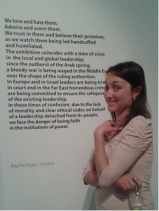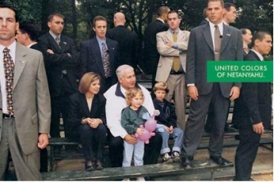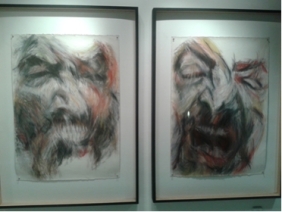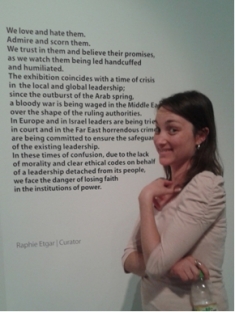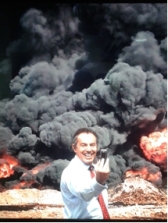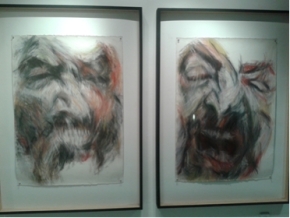During the past few years we have been witness to a phenomenon known as “religious hatred” in Israel and our region. Isn’t this an oxymoron? Can religious hatred really be “religious”?
It is well know that Islamic fundamentalist versions of the religion of Islam have become prevalent in many parts of the world, especially in the Middle East. Even though they represent the minority of Muslims in the world, they are very loud and noisy, creating a false impression that Radical Islam is the true Islam.
More and more, moderate Muslims are speaking up against this phenomenon in their societies, although doing so can be a risky business. For example, in my part of the world, a famous Palestinian professor by the name of Mohammad Dajani had to resign his academic position as professor at Al Quds University in East Jerusalem because of his moderate views. Yet, he does not give up and is currently working on new programs on Peace and Reconciliation through his moderate Muslim organization, known as Wasatia, the Middle Way.
Unfortunately, Jewish “religious” hatred has become rampant in certain extremist Jewish circles within Israel in recent years too. Rabbis and other “leaders” associated with the ideas of Rabbi Meir Kahane, whose political party known as Kach was banned from the Israeli parliament (the Knesset), are preaching and teaching hatred, according to their distorted ideas of Judaism all the time.. Generally they are not arrested—or if they are arrested , they are usually not brought to justice—but recently some of the leaders of one of these groups known as Lehava (Flame!) have been arrested and it appears that the Israeli Law Enforcement authorities may finally take this seriously.
Some of the Lehava boys (they are often minors) were arrested a few weeks ago and confessed (with smiles!) to the burning of a kindergarten classroom in the Hand in Hand Bilingual School in Jerusalem. Yes, you read correctly: burning! These young Jewish extremists not only burned the classroom, but also the books in the classroom. The reason: This unique school in Jerusalem preaches and teaches Arab-Jewish Coexistence in Israel! This shook up Jerusalem—across the political spectrum—and perhaps even the Police this time!
Where do these young Jewish hooligans get their “religious” ideas from? Their rabbis!
In an excellent article by my colleague at the Interreligious Coordinating Council in Israel , Ophir Yarden on “Recent Halakhic Discourse in Israel Encouraging Racism and Violence” (in Religious Stereotypes and Interreligious Relations (edited by Jesper Svartik and Jakob Wiren, Palgrave MacMillan, 2013), the sources for this extremism are laid out clearly and succinctly. In his penetrating essay, Yarden ( who teaches Judaism and Israel at several academic centers in Jerusalem) brings our attention to books such as Torat Hamelech (The King’s Teaching), which was published by Rabbis Yosef Elitzur and Yizhak Shapira in 2009 that teach that the killing of Gentiles is not prohibited by the Ten Commandments and Baruch Hagever (Blessed is the Man, 1994) which includes eulogies and articles that support violence against those presented as enemies of the Jewish People.
I could list many more Jewish “religious” leaders in Israel who support these ideas, which are far from mainstream ideas, but nevertheless have significant numbers of supporters. In fact, the Israel Religious Action Center (an arm of the Reform Jewish movement in Israel) published a booklet a few years ago citing many statements like the ones above by dozens of so-called “rabbis” in Israel!
As I write this blog post, I am mindful that this is the last day of Hanukah. On Hanukah, I believe that we should rededicate ourselves to an enlightened form of Judaism, not the one represented by the extremist versions mentioned above. As we light the last candles tonight, we hope that they will inspire us to embrace a Judaism that is Jewish and Democratic, Jewish and Worldly, Jewish and at the same time open to the ideas and inspirations of other religions and culture.
One of my favorite Hanukah songs reminds us that Hanukah is a time to bring light to prevail over darkness (Banu hoshech l’gareish). Let us indeed banish the forces of “religious hatred” which seek to instigate religious wars and bring us back to the “Dark Ages”.
So, can “religious” hatred” be “religious? I don’t think so. Rather, it is a form of blasphemy, a desecration of the name of God.
With the help of our law enforcement authorities—the police and the courts– it is time to arrest those extremists in our midst who sow the senseless seeds of hatred and racism, to the detriment of all citizens of our country.
Read more: Can “Religious Hatred” be “Religious”? | Ron Kronish | The Blogs | The Times of Israel http://blogs.timesofisrael.com/can-religious-hatred-be-religious/#ixzz3MnTLCqq9
Follow us: @timesofisrael on Twitter | timesofisrael on Facebook
Filed under: Uncategorized | Leave a comment »


